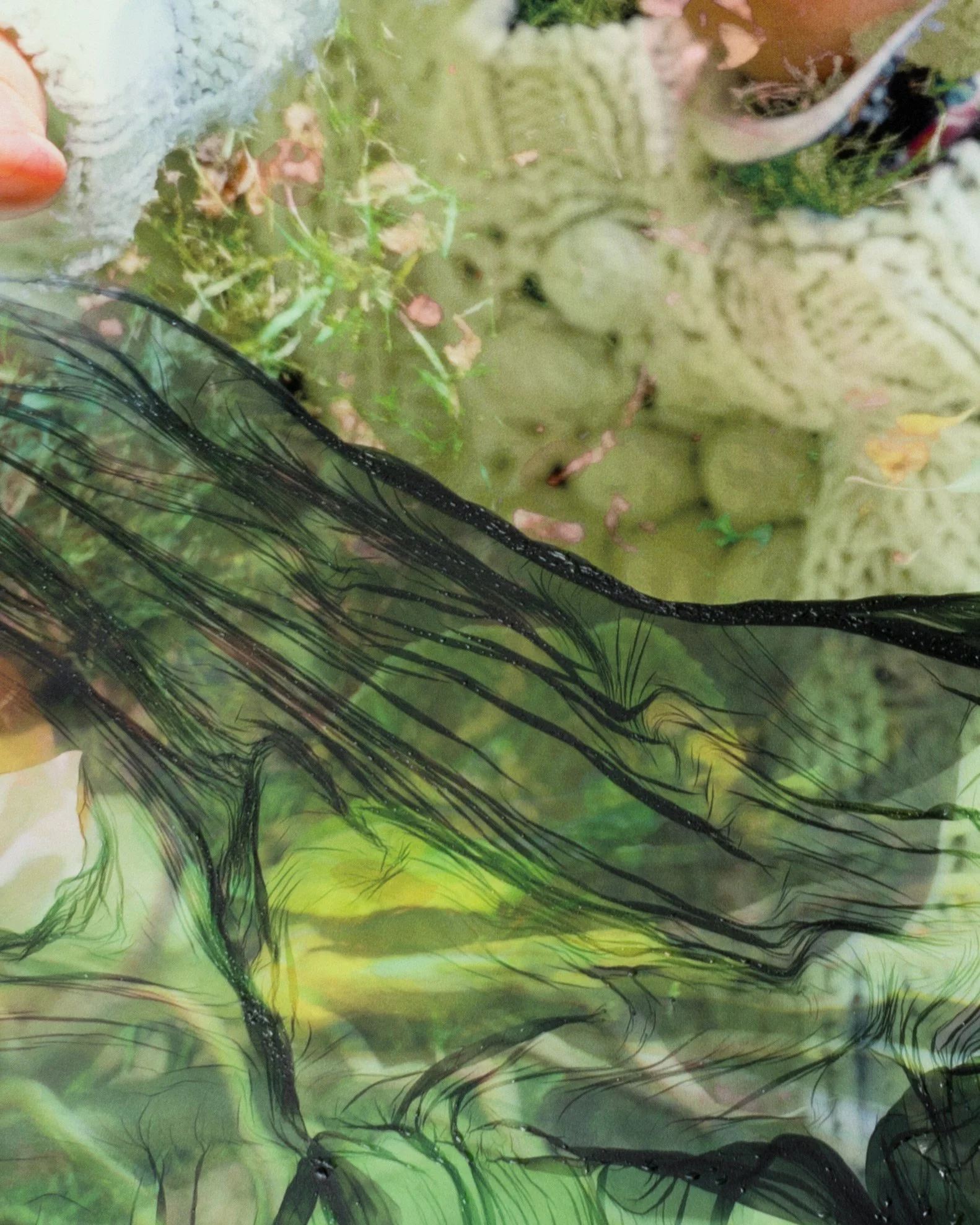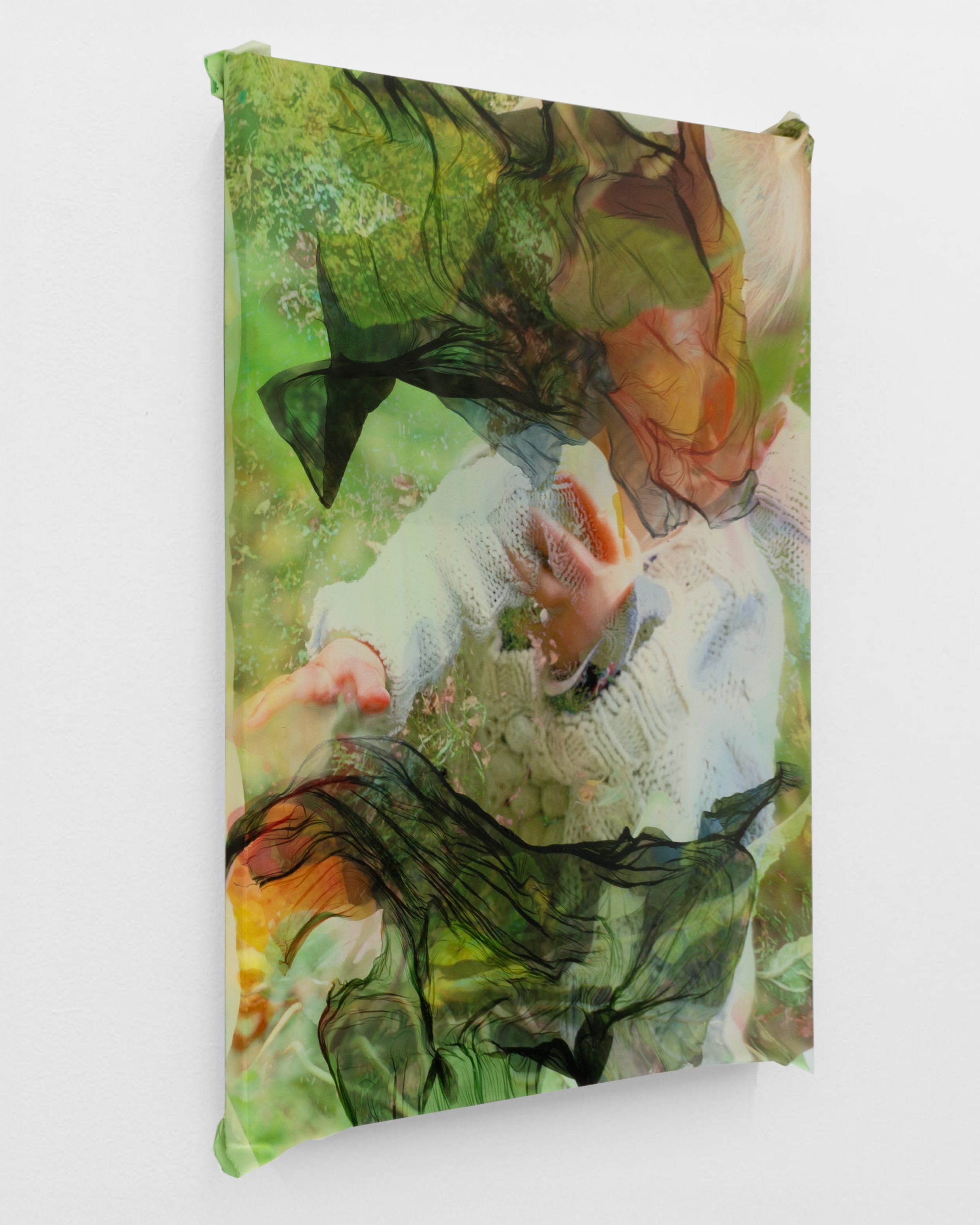 Image 1 of 4
Image 1 of 4

 Image 2 of 4
Image 2 of 4

 Image 3 of 4
Image 3 of 4

 Image 4 of 4
Image 4 of 4





Still Life
2025
Watercolor, ink and water, photographic transfer on silk
33.5” x 27” / 85 × 68 cm
There’s a quiet shock in realizing that life can spring from ground you thought was barren. And there’s a comfort, too, in believing that what you dreamed—what you feared would break—can stand, flesh and fruit and faith, right before your eyes. Abiding wonder hidden in our most fragile hopes.
That electrifying convergence of fear and faith surges through Still Life.The piece layers fragility and resilience. My son reaches for an apple on our land—one I’d prayed would bear fruit long after we’re gone. Around him, lush blossoms and ripening apples symbolize the delicate threshold between devastation and deliverance.
God once spoke to me in a dream. He said I’d have a son, born on June 11th. I never let that schedule disappear from my mind. Yet as I carried my child and watched every scan with the doctors’ perplexed faces, I heard the word “stillborn” float through the room like a bitter omen. My placenta was faltering. I half-waited for despair to take root. Then the phone rang with the date for my C-section: June 11th. Equal parts tremor and relief.
Still Life reaches for that tension.The painting catches my son in a moment that felt both mundane and miraculous.
Drawing upon the still-life tradition, I join the lineage of artists who saw in fruit and flowers not merely decoration but a meditation on the interplay of time and transcendence. Where abundance and ephemerality coexist. Here, the orchard’s bloom holds an invitation: to glimpse the tender pulse of hope in the face of the unknown, and to wonder how something so precarious might endure long after I’m gone.
2025
Watercolor, ink and water, photographic transfer on silk
33.5” x 27” / 85 × 68 cm
There’s a quiet shock in realizing that life can spring from ground you thought was barren. And there’s a comfort, too, in believing that what you dreamed—what you feared would break—can stand, flesh and fruit and faith, right before your eyes. Abiding wonder hidden in our most fragile hopes.
That electrifying convergence of fear and faith surges through Still Life.The piece layers fragility and resilience. My son reaches for an apple on our land—one I’d prayed would bear fruit long after we’re gone. Around him, lush blossoms and ripening apples symbolize the delicate threshold between devastation and deliverance.
God once spoke to me in a dream. He said I’d have a son, born on June 11th. I never let that schedule disappear from my mind. Yet as I carried my child and watched every scan with the doctors’ perplexed faces, I heard the word “stillborn” float through the room like a bitter omen. My placenta was faltering. I half-waited for despair to take root. Then the phone rang with the date for my C-section: June 11th. Equal parts tremor and relief.
Still Life reaches for that tension.The painting catches my son in a moment that felt both mundane and miraculous.
Drawing upon the still-life tradition, I join the lineage of artists who saw in fruit and flowers not merely decoration but a meditation on the interplay of time and transcendence. Where abundance and ephemerality coexist. Here, the orchard’s bloom holds an invitation: to glimpse the tender pulse of hope in the face of the unknown, and to wonder how something so precarious might endure long after I’m gone.
